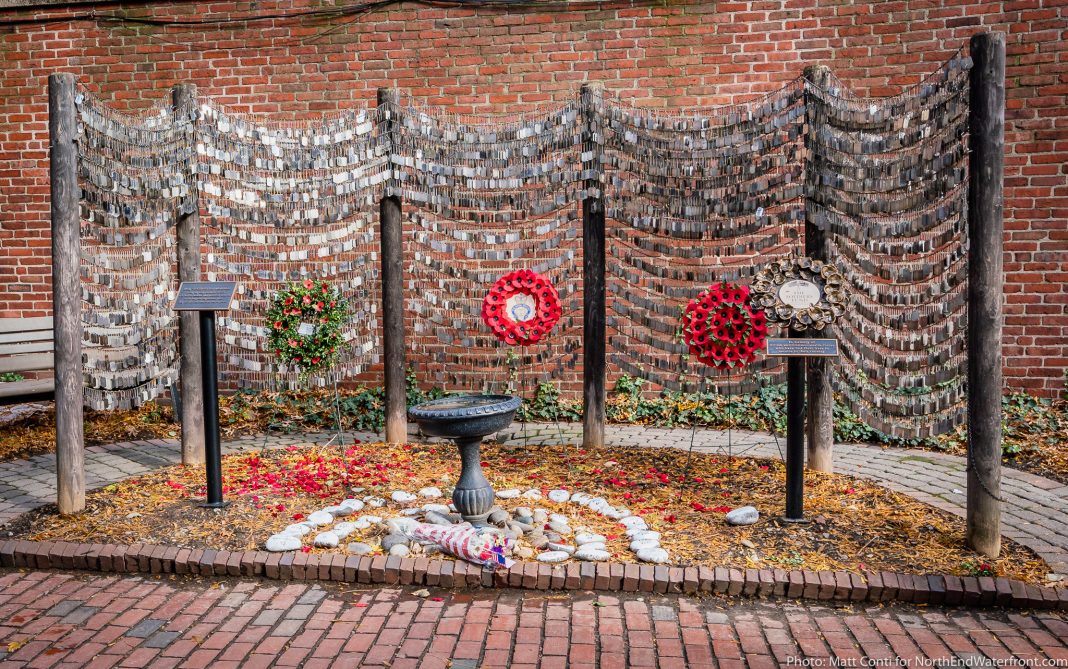
Under the heading, America At War, Smithsonian.com profiles the Iraq-Afghanistan Memorial dog-tag memorial at the Old North Memorial Garden on the Freedom Trail in Boston’s North End. The piece asks “How should we memorialize those lost in the war on terror?“.
The oldest of its kind, the Old North memorial honors service members killed in the Iraq and Afghan wars since 2006. The article speaks of its impact on visitors.
Now six tall posts are planted into the soil, in the shape of a horseshoe. Strung between each pair are wires, and hanging from them are dog tags, giving the effect of a shimmering, semicircular wall. On Saturday mornings, Bruce Brooksbank, a congregant and the memorial’s volunteer coordinator, visits for about two hours. He tends the garden, which is planted with red and white forget-me-nots. In his pocket he carries a few blank dog tags and, after checking iCasualties.org, he adds however many are required. At the time of writing, there are 6,978. When the dog tags catch the light, reflections dance on the ground. Bruce says that the light reminds him of angels, and the chime from the wind passing through them their voices.
The memorial is on a slight rise beside a brick pathway, and most of its visitors seem to happen upon it. When they learn what it is, they appear almost startled. In the hour that I sit with Bruce, nearly everyone who comes along slows to consider it. One young man, maybe a college student, strolls past wearing a tank top, khaki shorts, flip-flops and electric green plastic sunglasses. He stops and stares up at the memorial as though it’s a mountain he has yet to summit. Then he breaks down crying. He looks up at the monument a second time, and then breaks down again. The outburst is quick, less than a minute. Then he leaves.
Two new plaques were recently unveiled at the Iraq-Afghanistan Memorial. One plaque describes the dog tags as representing each American serviceperson who lost their life in the wars. The second plaque, a bronze poppy wreath, honors servicepersons from the British Commonwealth that have died.




The memorial is both a heart-warming and heart-wrenching tribute to lives lost at war. It gives us pause each time we pass by. Kudos to Smithsonian for its piece.